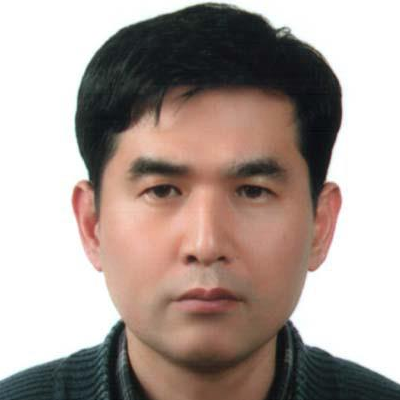Remote Sensing and Geophysics Methods for Geomorphology Research
A special issue of Remote Sensing (ISSN 2072-4292). This special issue belongs to the section "Remote Sensing in Geology, Geomorphology and Hydrology".
Deadline for manuscript submissions: 31 May 2024 | Viewed by 4007
Special Issue Editors
Interests: reconstruction and monitoring of topography; InSAR/SAR; detection of geomorphological feature; planetary topography
Special Issues, Collections and Topics in MDPI journals
Interests: remote sensing applications in land dynamics; landforms and surface processes on Mars; glacial and periglacial geomorphology; glacial hazards; Mars analogue research; high-resolution terrain modelling and interpretation; UAVs for environmental remote sensing
Special Issues, Collections and Topics in MDPI journals
Special Issue Information
Dear Colleagues,
In earlier studies, the principles of geomorphic processes were established through inferences based on spatiotemporally restricted observations of corresponding features. However, at times such limited approaches were insufficient due to vegetation, topsoil, and man-made coverings obscuring the study objects and their slow migrations over time.
Nowadays, in addition to the improved resolution of remote sensing images, science has access to other sophisticated tools and technological approaches with which to observe, track and monitor the dynamics of geogmorphic features. InSAR is a powerful tool for tracking millimeter-scale movements of topographical features such as sliding escarpments, wind-induced degradation, creeping faults, and gradual changes in stream channels. The scientific community is in the process of solving the evolutionary problem of hidden geomorphic features through long-wavelength synthetic aperture radar imaging, the design of super-resolution ranging sensors capable of generating bare-earth terrain images by applying filters, the numerical simulation of the corresponding process and the inter-comparison to target terrains. GPR and high-resolution gravity data now provide information about subterranean layers deep beneath the target terrain. It is also possible to define shallow underwater geomorphology using easily accessible bathymetric data sets and tools. Therefore, the focus of recent research is shifting from securing data sources on concealed terrains and to interpreting, compiling, and fusion of diverse data sets on geomorphic features and their migrations.
This Issue has been organized to provide a platform for presenting advanced techniques and case studies on the observation of the spatiotemporal evolution of geomorphic features. In terms of the dataset methods used, this Issue invites the submission of research onInSAR, SAR backscattering, PolSAR, LIDAR in air/space, gravitational anomalies, and magnetic fields, observing both topographical features and their movement. Target geomorphologies include the fluvial cases, i.e., traces of paleochannels, lacustrine deposits and their changes induced via megaflooding, the avulsion of channels, the aeolian feature such as ripples, dunes and yardangs, glacial and periglacial feature and their changes and the geomorphologies of tectonic and volcanic origin. The spatial domain of this Issue is not only our planet but encompasses extraterrestrial geomorphologies and their changes.
We also invite researchs to institute and implement a novel algorithmic improvement on data sets, new sensor designs to monitor the target morphology, new theoretical and observational findings, and applications of machine learning approaches.
Submissions may cover, but are not limited to, the following themes:
- SAR/InSAR/PolSAR observations and algorithmic development tracing on morphologic changes
- Deep subsurface/underwater feature identification involving geomorphic evolutions
- The techniques to integrate gravitation/magnetic analogies on other remote sensing data over geomorphic features
- Any case studies to follow the contemporary migrations/evolution of geomorphology
- The studies of planetary geomorphology using remote sensing data
- Any studies on algorithmic improvements for observing geomorphic features and their evolutions
Dr. Jungrack Kim
Dr. Anshuman Bhardwaj
Guest Editors
Manuscript Submission Information
Manuscripts should be submitted online at www.mdpi.com by registering and logging in to this website. Once you are registered, click here to go to the submission form. Manuscripts can be submitted until the deadline. All submissions that pass pre-check are peer-reviewed. Accepted papers will be published continuously in the journal (as soon as accepted) and will be listed together on the special issue website. Research articles, review articles as well as short communications are invited. For planned papers, a title and short abstract (about 100 words) can be sent to the Editorial Office for announcement on this website.
Submitted manuscripts should not have been published previously, nor be under consideration for publication elsewhere (except conference proceedings papers). All manuscripts are thoroughly refereed through a single-blind peer-review process. A guide for authors and other relevant information for submission of manuscripts is available on the Instructions for Authors page. Remote Sensing is an international peer-reviewed open access semimonthly journal published by MDPI.
Please visit the Instructions for Authors page before submitting a manuscript. The Article Processing Charge (APC) for publication in this open access journal is 2700 CHF (Swiss Francs). Submitted papers should be well formatted and use good English. Authors may use MDPI's English editing service prior to publication or during author revisions.
Keywords
- geomorphology
- geomorphic processes
- tracing algorithms
- SAR/InSAR/PolSAR
- gravitation anomaly
- machine learning






